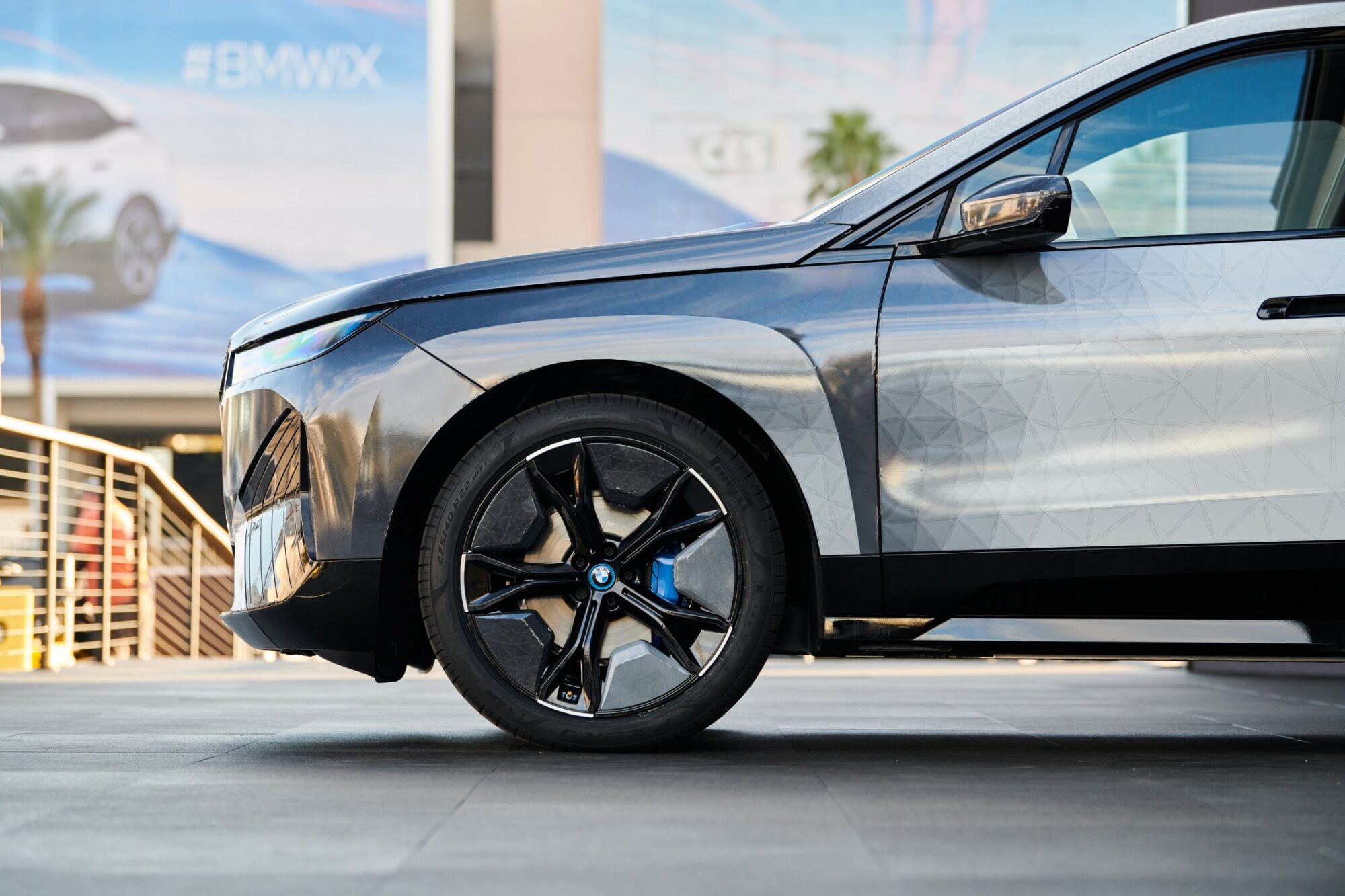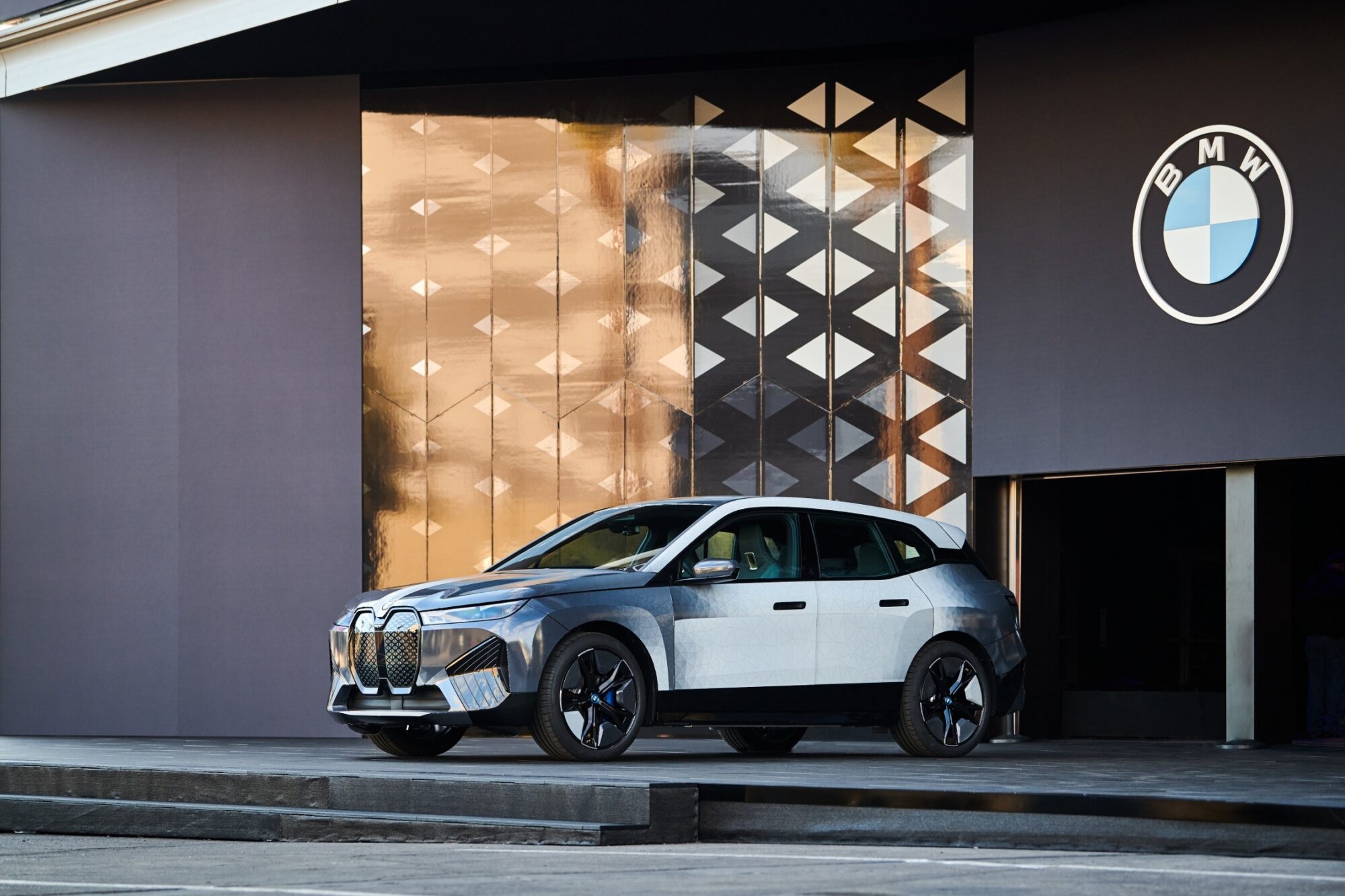The BMW iX Flow featuring E Ink is the first car in the world whose exterior color can be changed at the touch of a button. The vehicle is on display at CES 2022.
The surface coating of the BMW iX Flow featuring E Ink contains many millions of microcapsules, with a diameter equivalent to the thickness of a human hair. Each of these microcapsules contains negatively charged white pigments and positively charged black pigments. Depending on the chosen setting, stimulation by means of an electrical field causes either the white or the black pigments to collect at the surface of the microcapsule, giving the car body the desired shade.

Achieving this effect on a vehicle body involves the application of many precisely fitted ePaper segments. Generative design processes are implemented to ensure the segments reflect the characteristic contours of the vehicle and the resulting variations in light and shadow. The generative design algorithms enable the necessary formability and flexibility required to tailor the ePaper exactly to the design lines of the vehicle.
Laser cutting technologies guarantee high precision in generating each segment. After the segments are applied and the power supply for stimulating the electrical field is connected, the entire body is warmed and sealed to guarantee optimum and uniform color reproduction during every color change.

How a variable exterior color can increase efficiency?
A variable exterior color can also contribute to wellness in the interior and to the efficiency of the vehicle. This is done by taking account of the different abilities of light and dark colors when it comes to reflecting sunlight and the associated absorption of thermal energy. A white surface reflects a lot more sunlight than a black one. By implication, heating of the vehicle and passenger compartment as a result of strong sunlight and high outside temperatures can be reduced by changing the exterior to a light color. In cooler weather, a dark outer skin will help the vehicle to absorb noticeably more warmth from the sun.
In both cases, selective color changes can help to cut the amount of cooling and heating required from the vehicle’s air conditioning. This reduces the amount of energy the vehicle electrical system needs and with it also the vehicle’s fuel or electricity consumption. In an all-electric car, changing the color in line with the weather can therefore also help to increase the range. In the interior, the technology could, for example, prevent the dashboard from heating up too much.
E Ink technology itself is extremely energy efficient. Unlike displays or projectors, the electrophoretic technology needs absolutely no energy to keep the chosen color state constant. Current only flows during the short color changing phase.
Discover more from SNAP TASTE
Subscribe to get the latest posts sent to your email.


